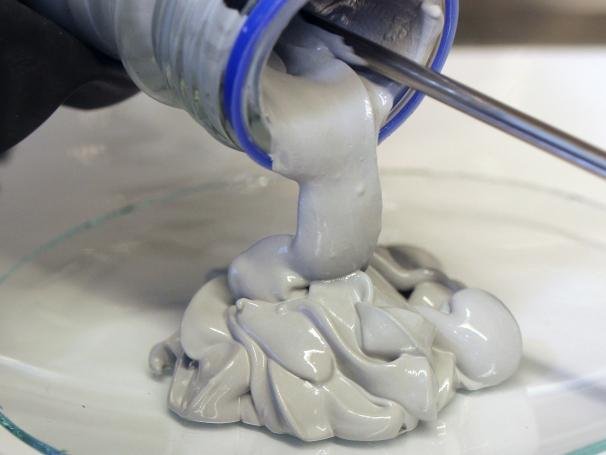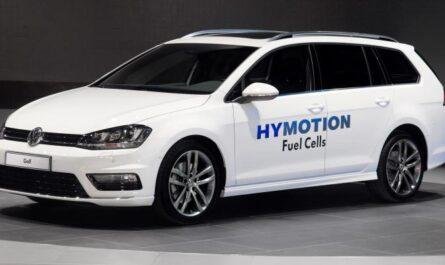
Hydrogen power paste is a major breakthrough that the scientists at the Fraunhofer Institute of Germany have discovered. This new energy paste is having the consistency of toothpaste.
Among all the elements, hydrogen is the most abundant element in the universe. Hydrogen has a very high energy density and is pollution free producing only water as a byproduct during energy production. So being a renewable and clean source of energy, hydrogen-powered vehicles have been the talk of the town for a long time.
As of 2022, we are still far away from realizing the dream of the hydrogen economy. The reason for this is that hydrogen though very abundant and the first element of the periodic table has a very simple atomic structure. This simple atomic structure of hydrogen is having only one proton and one electron. Due to this pure hydrogen tends to make very strong bonds with other elements on this planet and as you might know that the compounds are relatively more stable than that of the element itself.
Drawbacks of hydrogen as fuel
Also, the free or pure form of hydrogen tends to exit the earth’s atmosphere without the compounds or bonds. Though hydrogen is very abundant it makes up only 0.14 % of the total earth’s crust. So hydrogen is an extremely light element along with being a very minuscule atomic structure. This results in challenges in storage and leakage. Also, hydrogen is a very explosive gas which results in many safety hazards and there is always a risk of an accident.
All these drawbacks may sound discouraging but even at the end of the darkest tunnels, there is light. A potential breakthrough has been achieved at the hands of a research team in Dresden, Fraunhofer institute Germany. Researchers have presented magnesium-based Powerpaste that stores Hydrogen energy at ten times the density of a lithium battery. This in turn makes hydrogen fuel cell-powered vehicles travel further and recharge faster. But before we go any further, let’s talk a little about hydrogen. And in the end, we will also be looking at the future plans and applications of this groundbreaking technology.
Current hydrogen production methods and shortcomings
Hydrogen as said earlier tends to make strong bonds with other elements of the periodic table. These are mainly in the form of C-H chain bonds and water the H2O. Considering the present-day techniques of hydrogen synthesis are mainly by stem methane reforming. In which the following reaction takes place. (Those who do not want to dive deep into the chemical process may please continue reading further.)
Steam Methane Reforming Reaction
CH4 + H2O + (Heat) → CO + 3H2
Water Gas Shift Reaction
CO + H2O → CO2 + H2 + (∆ Heat)
The above is the most common and largely practiced method of extracting hydrogen from methane. Now to break the bond the reaction takes place at high temperatures and high-pressure meaning still this is a very energy-intensive process. Also, the reaction produces carbon dioxide meaning the hydrogen produced from the above method is not green enough. There are other methods of hydrogen synthesis like electrolysis of water

There are other methods of hydrogen synthesis like electrolysis of water. In this process, electricity is applied to the electrodes made up of precious metals. Again these precious metal electrodes add up to the cost of production of hydrogen through this method. Also, the hydrogen produced by this method uses a tonne of water and a lot of electricity. A total of 30 % of electricity is utilized in the splitting process or electrolysis of the water and another 26 % is utilized in transportation and storage leaving roughly half of the energy in hydrogen before it makes it to the vehicle. As said earlier the hydrogen has to be stored in large pressurized storage tanks which is also a challenge.
Hydrogen power paste breakthrough
The hydrogen power paste is a kind of grey-colored goop having the consistency of toothpaste. In this, the hydrogen and magnesium are combined at high temperatures and atmospheric pressure resulting in a grey-colored slurry. And this is hydrogen power paste. Now, this is a big technological breakthrough.
Reaction for formation of power paste (Just for chemistry geeks)
Mg + H2 —> MgH2 (At 500o and 200 Atmospheres)
Problems solved by hydrogen power paste
It solves the major problem of hydrogen storage and transportation. As we all know large, high pressurized, and cooled storage tanks are required to store hydrogen. This power paste is stable even at room temperature. It retains the charge even for so many years. As the paste is very stable and does not require pressurized tanks, the transportation of the grey goop becomes easy. To retrieve power from the paste, just water and power paste are mixed at a controlled rate and the hydrogen is released.

Thus a cartridge of power paste can be rapidly changed and the vehicle is recharged. Thus this grey goop has a tonne of potential.
Power density compared to other fuels
The power paste consists of 10 % of hydrogen in the total weight of the paste. But that 10% is still ten times compared to the Li-Ion batteries. Below is the chart comparison of the various high power density fuels stacked up against power paste.

So we know that gasoline is the least efficient, second is hydrogen and lithium-ion batteries are the most efficient. Now as per the white paper published by the Fraunhofer institute the power paste will cost about $1.98 per kg.
Commercial Viability of hydrogen power paste
The average cost of cars using four various fuel types is as below

So from the above chart, we can see that the commercial viability of the power paste is the least. But we can have a guilt-free commute which is greener and better for this planet. But just a greener objective cannot super seed the current capitalist markets around the world. So is power paste a waste or is there a brighter side though. Well, the justification is that if you see the reaction the power paste provides one hydrogen atom, and half of the other is coming from the water and that water could be any water. So half of the fuel is made onboard from the water tank in the car itself. But as of now, electric cars are already expensive, and adding more steps and adding a fuel cell stack to the car would make it more expensive. So most of the cars and smaller vehicles will continue to be electric and that only makes sense as of now. So the question is what is to be done with this fantastic innovation? There are still many power-demanding sectors and energy is required for a sustained period of time and the cost is justified.
Applications
Aviation is a very polluting and fossil fuel-dependent industry. Current day lithium-ion batteries are way heavier for the aircraft to carry large loads and long haul flights. The power paste could play a vital role in the aviation industry. Drones or UAVs that are powered by cleaner and greener hydrogen could well be the reality due to this breakthrough. Trucks, Buses, and Trains are also important aspects of transport where this new fuel can play a pivital role. Satellites and interstellar missions and space explorations are yet some of the very appropriate applications where this new breakthrough can play a vital role. So to sum it up the object over cost is important in those cases, this new innovation is going to be a boon. I hope you like reading this new dimension of alternative power technology.



